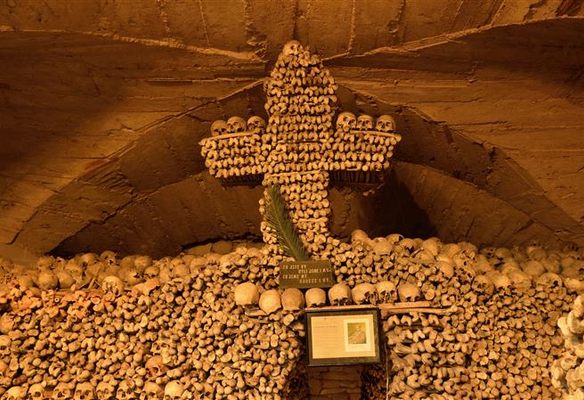About
For the Bohemian queens and princess, it was a raw deal; for the other 15,000 skeletons in this crypt, it was an upgrade to nicer digs.
The crypt under the St Peter and Paul’s church in Melník was intended to be a holy burial ground for Bohemia's royal ladies, but in the 1520s a plague epidemic swept through the area, creating a huge demand for burial ground. The corpses which had been occupying the cemeteries surrounding the church were promptly dug up, and some 15,000 corpses were cleaned and dumped into the vault.
It was basically just a pile of bones, and in the 1780s when ossuaries were declared a health risk, the vault was bricked up and forgotten about for some 230 years, until a Czech anthropologist, Jindrich Matiegka, decided to take a look for himself.
Matiegka is considered one of the fathers of Czech anthropology, and spent a considerable amount of time studying skeletons, crypts, and ossuaries throughout the then Czechoslovakia. In the 1910s, Matiegka reopened the entrance to the crypt and began assembling the bones into his very own ossuary.
Arranged with a "literate theology," Matiegka stacked the bones into orderly piles and meaningful patterns. The largest pile can be seen directly in front of the entrance and is 15 feet square and over six feet high, and is believed to contain roughly 10,000 skeletons.
Matiegka arranged the other 5,000 skeletons into a large cross of bones decorated with a palm frond, skulls into a heart shape representing love, and most notably built a tunnel of leg bones to represent Christ's resurrection. Professor, anthropologist, and religious man, Matiegka definitely had a Gothic streak. As a kind of signature Matiegka wrote the Latin inscription "Ecce mors" ("Behold death") spelled out in bones.
Today, you can still visit the ossuary, as well as the lovely church above it. It is open daily except Mondays.
Related Tags
Know Before You Go
Tel. 315 622337, or 731 479031
Community Contributors
Added By
Published
October 10, 2016























































